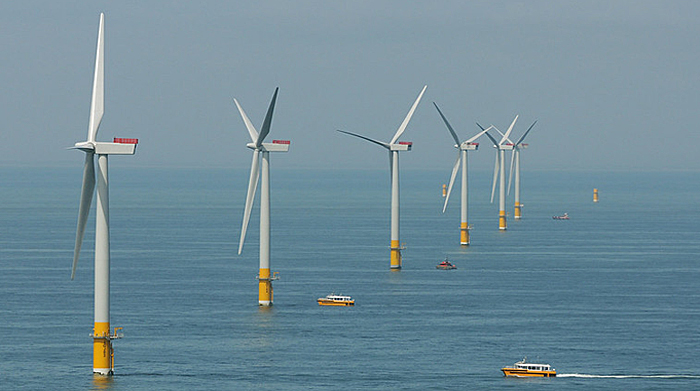Atlantic Offshore Wind Transmission Study Released

Image courtesy of Dept. of Energy and Climate Change under Attribution-NoDerivs 2.0 Generic License, resized to 700 x 391 pixels.
The National Renewable Energy Laboratory (NREL), in conjunction with the Pacific Northwest National Laboratory, has released its Atlantic Offshore Wind Transmission Study, which compares the merits of various transmission strategies for enabling offshore wind energy along the east coast (from South Carolina to Maine). The study assesses various “near term” solutions (by 2030) and “long term” solutions (by 2050). What follows is a summary of the key points of the study.
Key Points from the NREL Atlantic Offshore Wind Transmission Study
The report states that offshore wind power is projected to be a key part of achieving a low-carbon future for the Atlantic states, which is probably a bit anticlimactic given that the research report was funded by the DOE’s Wind Energy Technologies Office. Sarcasm aside, offshore wind is clearly an untapped opportunity that needs to be exploited.
In my mind, the main takeaway from the Atlantic Offshore Wind Transmission Study is that – unlike early wind projects that individually connected to the onshore infrastructure – strategically linking offshore wind energy projects via offshore transmission should help reduce production costs, reduce grid congestion, enhance reliability, lower curtailment, and produce several environmental benefits.
Additionally, the report suggests that wind energy projects can be planned around various environmental constraints and ocean co-uses, and should be developed in phases to minimize risk. The report also identified feasible transmission corridors, accounting for ocean co-uses and environmentally protected areas. The study also sought to inform the Atlantic Offshore Wind Transmission Action Plan, which provides planning for integrating offshore wind projects to the grid.
Click on the link above to read the full report. I’d recommend it. At the end of the day, forces beyond our control are pushing for a clean energy future, and offshore wind projects, following the roadmap outlined within the Atlantic Offshore Wind Transmission Study, seem like a clear path for eventually getting to the finish line.



